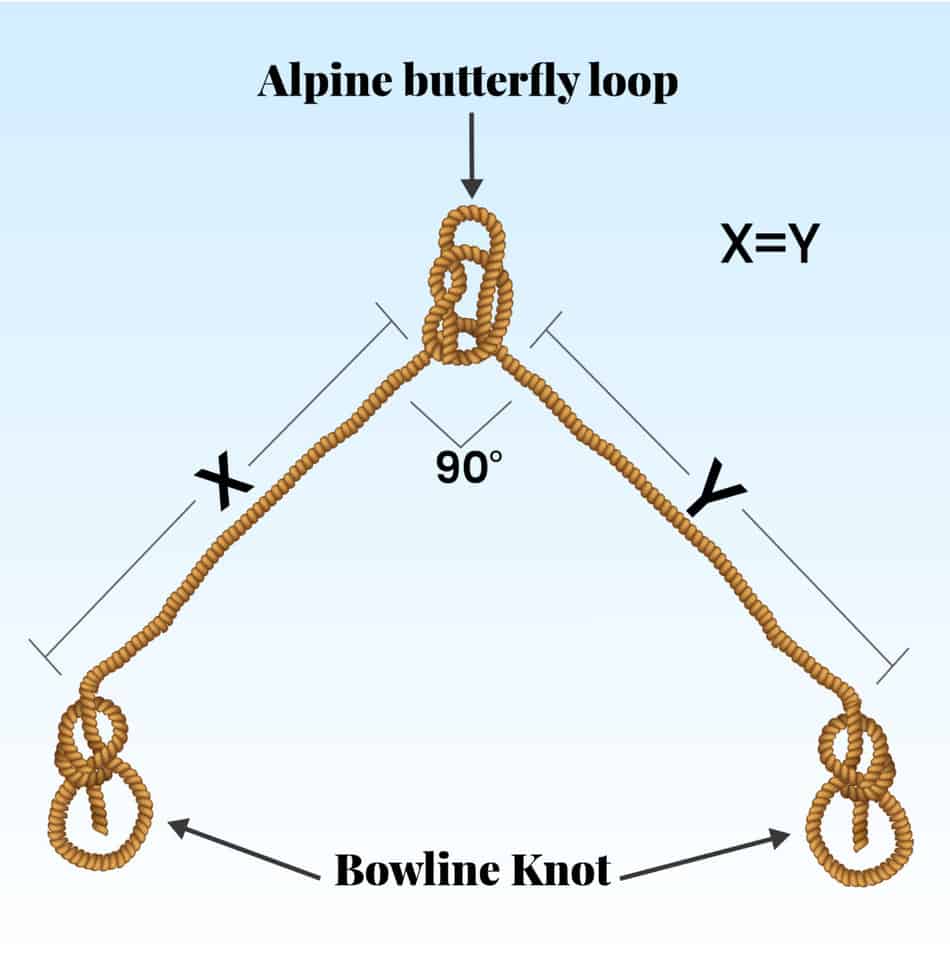As an Amazon Associate, we earn from qualifying purchases. We may also earn commissions if you purchase products from other retailers after clicking on a link from our site.
While at anchor you want to be relaxing not only yourself but also the boat, this means that the boat can not be swinging around from left to right and jerking around as soon as there’s a small shift in the wind.
On a monohull, this is not a big issue since firstly it has a big keel that slows down the swinging (even though it will still roll, which I think is worse) and it has only one hull making balancing the boat on an anchor a little easier (even though many use bridle on monohulls as well).
A catamaran on the other hand has two hulls and balancing it can be a little tricky. This is where the bridle or snubber comes into place.
What is a Catamaran Bridle?
A Bridle (aka snubber or anchor snubber) on a catamaran is a device that will make the catamaran able to connect to an anchor at the center of the boat instead of on one of the bows, this makes the catamaran stable on anchor reducing its tendency to swing with the wind and minimizes the jerking motion which may lead to the anchor disconnecting from the bottom.
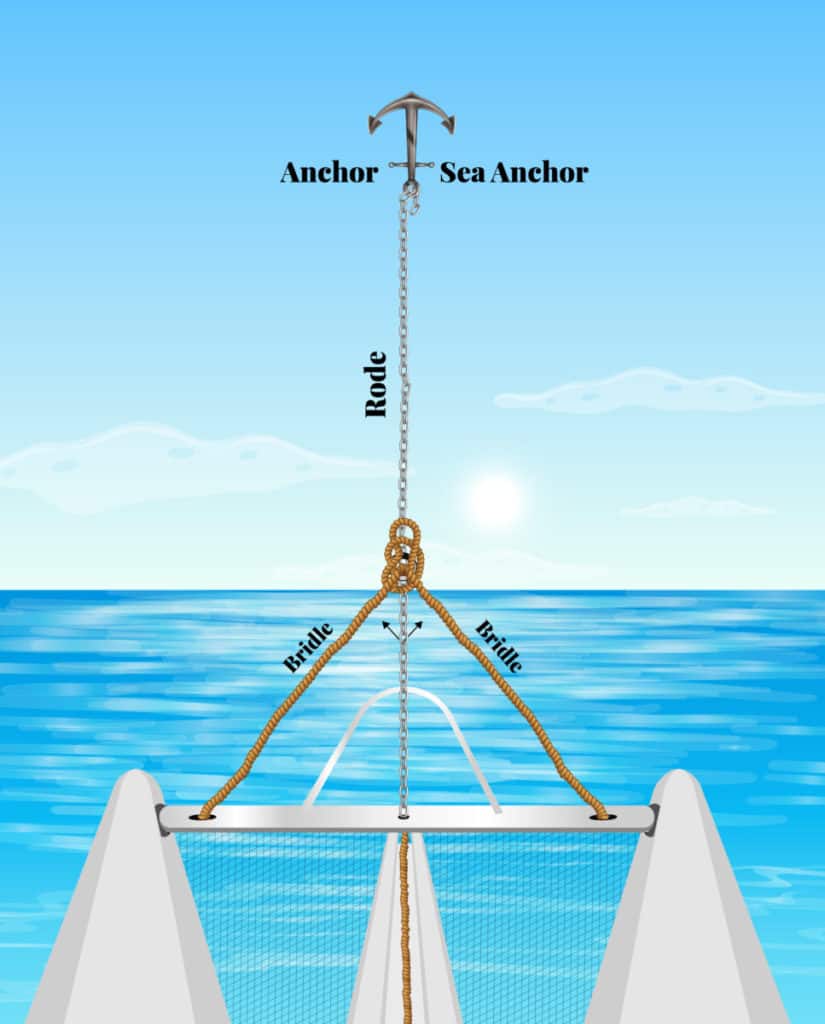
In the picture above you can see the triangle-shaped “rope” called bridle (or at least I hope you can, my sketching isn’t perfect, I know 😉 ) Worth to notice is the equal distance between both hulls and the top of the triangle if this point is centered you will also get a well-balanced anchorage, if the position of the connection is moved either to the left or right it will increase the swinging of the boat.
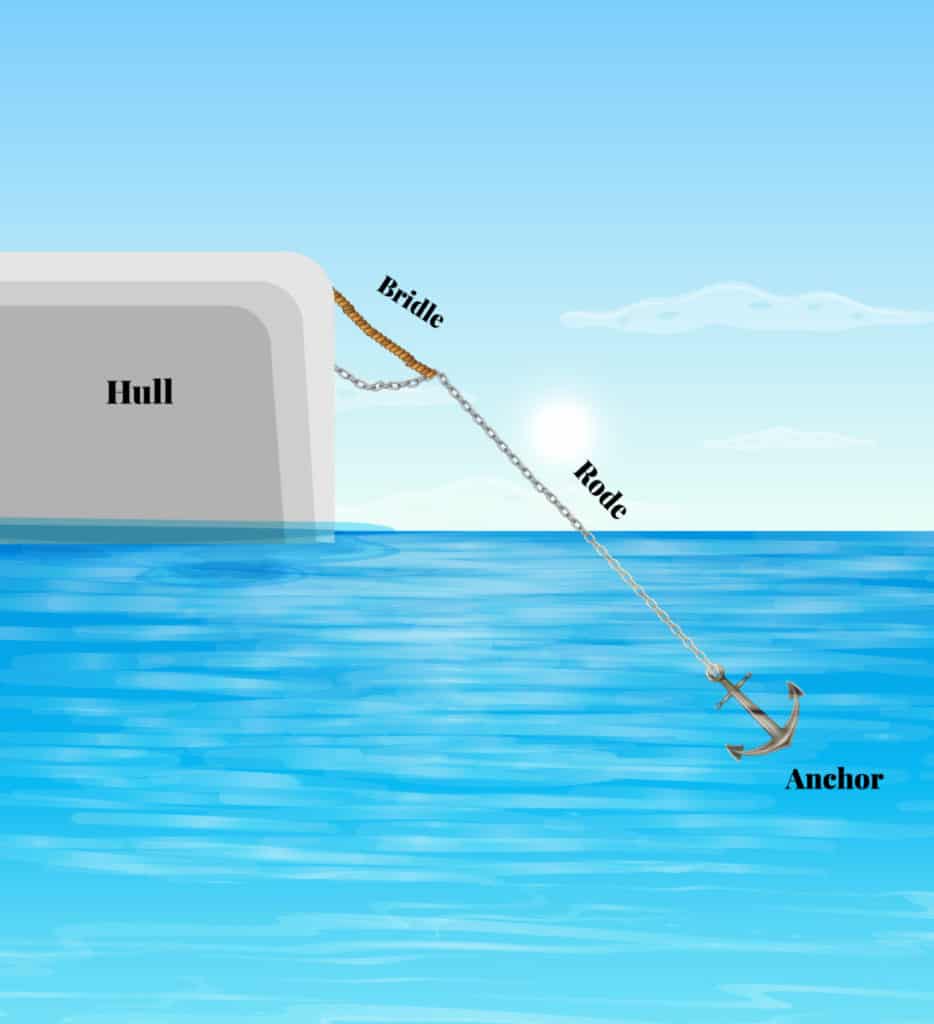
On this side view, I’m trying to show you how the anchor rode and bridle work together, the anchor rode connects to the bridle and the bridle connects to the boat, the rest of the rode is under no load and simply hangs free. This makes for enhanced safety. For this system to fail three things have to happen.
Firstly, even though on side of the bridle breaks you’re still hanging on to the other side, this is not optimal of course but it might be way better than just drifting away. And even if the second bridle connection gets destroyed the boat is still connected to its anchor through the standard anchor rode.
This gives a layer upon layer safety system which is a principle that should be implemented everywhere it can be.
How not to set up your bridle!
If you don’t connect the bridle so that the point of pivot is in the middle it will affect the way the boat swings around with the waves and wind. Offsetting the pivot point, as seen on the sketch above, will give the forces leverage on the left side and therefore pivoting the boat to the right.
This movement will continue until the boat moves so far to the right that forces acting on the right side is greater than that of the left, when that happens the boat will start to move to the left and the process repeats itself. This makes for a very unstable anchorage.
Attaching the bridle to the crossbeam is also a bad idea since it is not as strong as attaching it to proper chainplates made to withstand huge forces on the bows. The crossbeam is mainly used for pushing and pulling forces coming towards the center or away from the center, not vertical forces such as a catamaran climbing a wave at anchor.
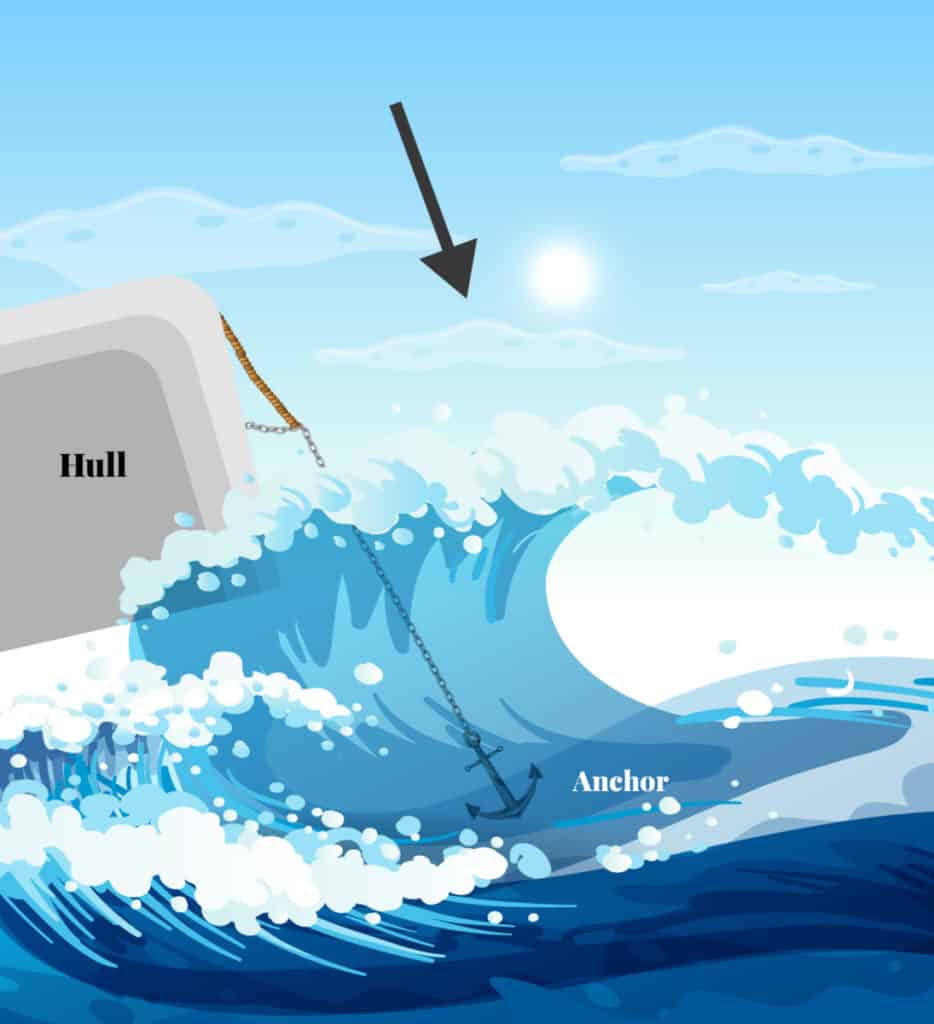
If your on a boat that doesn’t have a cross beam but instead has a solid deck (such as many old Prout catamarans) then you might also have a really strong anchor roller placed in the center (or amidship), with this setup there is less of a problem with the connection on the boat coming lose, but you’re still missing the shock absorber function that we will discuss below.
How does a Bridle reduce the jerking motion
Since the boat almost never will be perfectly lined up with bridle, chain/rode and anchor there will always be a little bit of slack on one side of the bridle triangle.
This means that when the boat catches some wind and starts to move it will first tighten up one side of bridle, then it has to move towards the center of pivot where both sides of the bridle will be under an equal amount of tension.
This means that the jerking cannot happen in the same way since moving the boat requires a lot of energy, and that takes away the energy from the jerk so when the boat reaches its center the energy has dissipated creating a smooth breaking instead of an instant jank.
This leads to a smooth and slow transfer of tension from the boat to the anchor.
Do it your self Catamaran Bridle/anchor snubber!
You can buy a full kit or you can make one on your own, I recommend buying one since your entire boat is at stake. Losing your anchor at midnight just because you did the knots wrong just sucks, (believe me I have tried it, and I ended up on the beach… I learned a lot from that, and below is the result from what I learned)
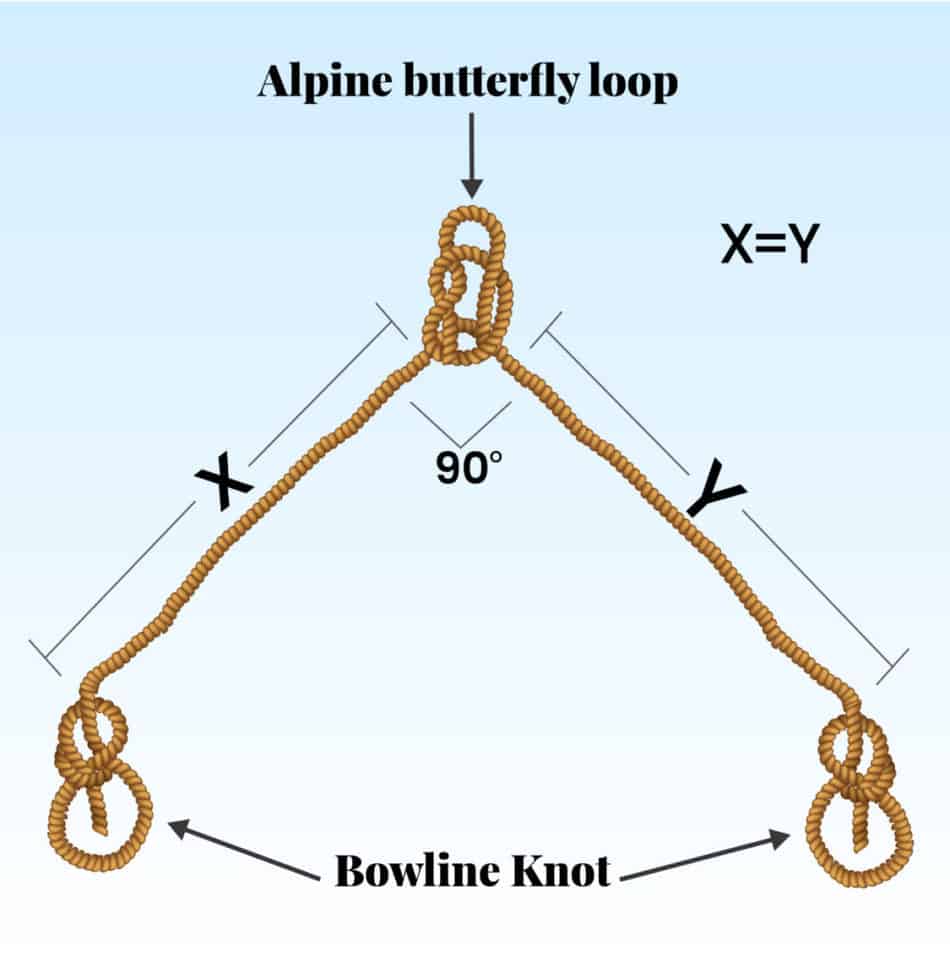
- Get the right measurements of your boat, make sure you measure from two solid points on the boat, preferably cleats. Make sure you get a proper rope considering aspects such as boat size, weight, etc. you can also reinforce it with anti-chafing covers made from old hoses.
- Using the schematics above you can calculate what length you need, make sure you add some extra for the knots. it’s better to go for some extra length, you can always remove that, splicing is more difficult.
- At the center of the rope tie an alpine butterfly loop, (or something similar) this will be the part that the anchor chain will attach to. Alpine butterfly loops are great since they can easily be removed and you can use the rope for other purposes if you need to, this I would definitely recommend that you add some chafing covers too.
- At the ends of the rope that attaches to the boat, I recommend using bowline knots since they’re strong and easy to break open when not under load.
There are variations of this, for example instead of the alpine butterfly you could use a prusik knot, which will make it possible to adjust the center point, this might be useful if you see your boat dragging to one side but might require some more advanced knot tying skills and different sized ropes making the assessment of whether or not you have the correct size a little more difficult.
How to Tie an Alpine butterfly knot
Here are some cool videos from Animatedknots.com on how to tie the above-mentioned knots! I recommend practicing these before you actually use them on your boat, you want to make sure you really understand how they work and that you can make them with enough confidence to trust your boat and the comfort of you and your crew.

